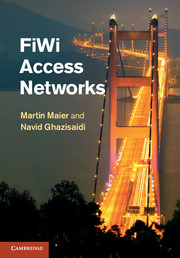2 - Legacy broadband technologies
from Part I - Introduction
Published online by Cambridge University Press: 05 January 2012
Summary
Broadband access involves various enabling technologies. The choice of broadband technology generally depends on a number of factors such as availability, price, location, service bundling, and technological requirements. In this chapter, we review the technical details of the most common types of fixed wireline, fixed wireless, and mobile wireless legacy broadband technologies, including, but not limited to, digital subscriber line, cable modem, and 3G systems. In our discussion, we try to highlight the benefits and limitations of available legacy broadband technologies.
Fixed wireline broadband technologies
Digital subscriber line
The local subscriber loop of most of today's telephone companies consists of unshielded twisted pair (UTP) copper wires. The length of the local loop depends on a number of factors such as population density and location of the connected residential or business customers. However, it is usually no longer than 4–6 km due to limitations stemming from legacy narrowband telephony. The copper wire pairs can be buried or aerial and are typically grouped together in so-called binders, also known as bundles, which may contain tens or even hundreds or thousands of twisted pairs (Czajkowski [1999]).
Traditional voiceband modems operate at the bottom frequencies (0–4 kHz) of the spectrum available on twisted pairs and offer data rates of no more than 56 kb/s. It is important to note, however, that it is not the UTP copper wires that prevent transport of broadband data signals but rather the bandwidth allocated by legacy telephone company switches to voice calls.
- Type
- Chapter
- Information
- FiWi Access Networks , pp. 15 - 38Publisher: Cambridge University PressPrint publication year: 2011



